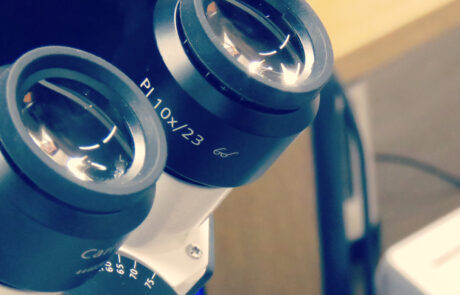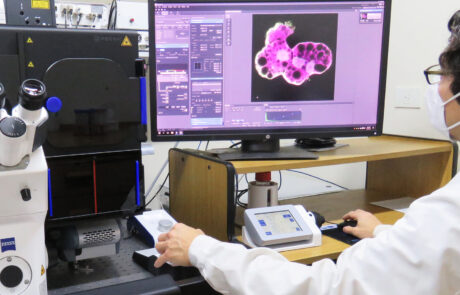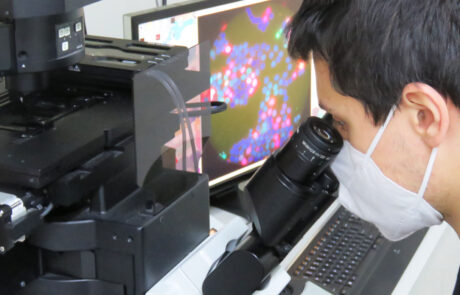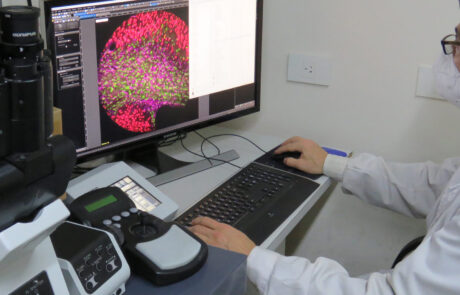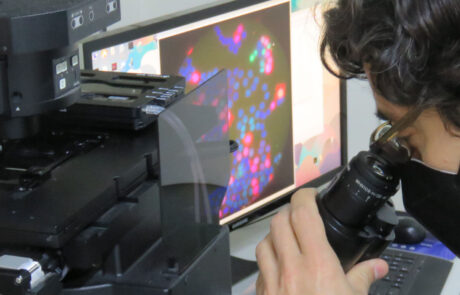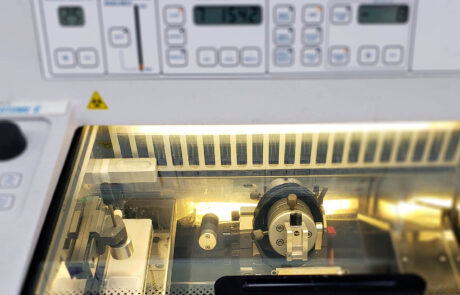Microscopy Service
IBYME’s Microscopy Service is committed to providing researchers with highly professional expert advice and state-of-the-art equipment to obtain reliable and reproducible scientific information. High-tech microscopes and professional guidance are open to the scientific community through CONICET’s High-Level Technological Services (STANs) and the National Microscopy System.
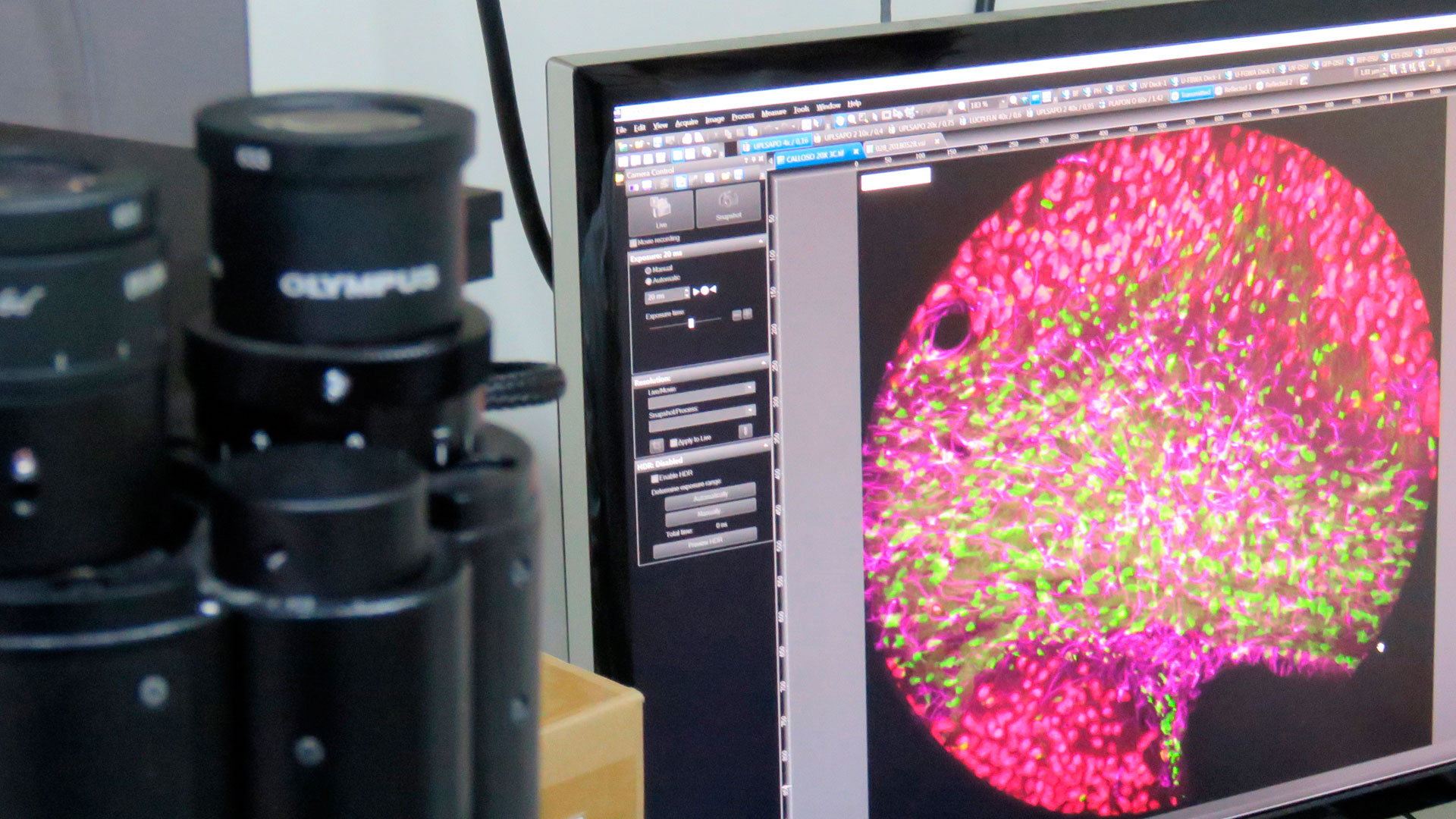
Rotating Disk Confocal Microscope, Olympus DSU
Features:
- Olympus IX83 motorized inverted microscope.
- Filter cubes to observe four channels: blue, green, red, and far red.
- Differential Interference Contrast (DIC).
- 4x, 10x, 20x (NA0.75), 40x (NA 0.95) and 60x ( NA 1.42) objectives.
- 4MP 16-bit monochrome CMOS camera ( Hammamatsu Orca Flash 4.0).
- Tokai Hit incubator with temperature, humidity, and CO2 5% control.
- Automatic focus drift compensator.
It is an enhanced microscope suitable for live cell imaging. It has a cell incubator and an automatic focus drift compensator for long-time recordings. It can also be used on fixed samples and for wide-field fluorescence. Samples should be mounted on slides or 35 to 60-mm Petri dishes.
Multichannel images can be obtained sequentially, including time courses, z – stacks, programmed multiple positions, and large area mosaics, as well as automating the acquisition by combining the different modes.
Due to the high quality of its images and the acquisition speed, it is an excellent option compared to confocal laser scanning.
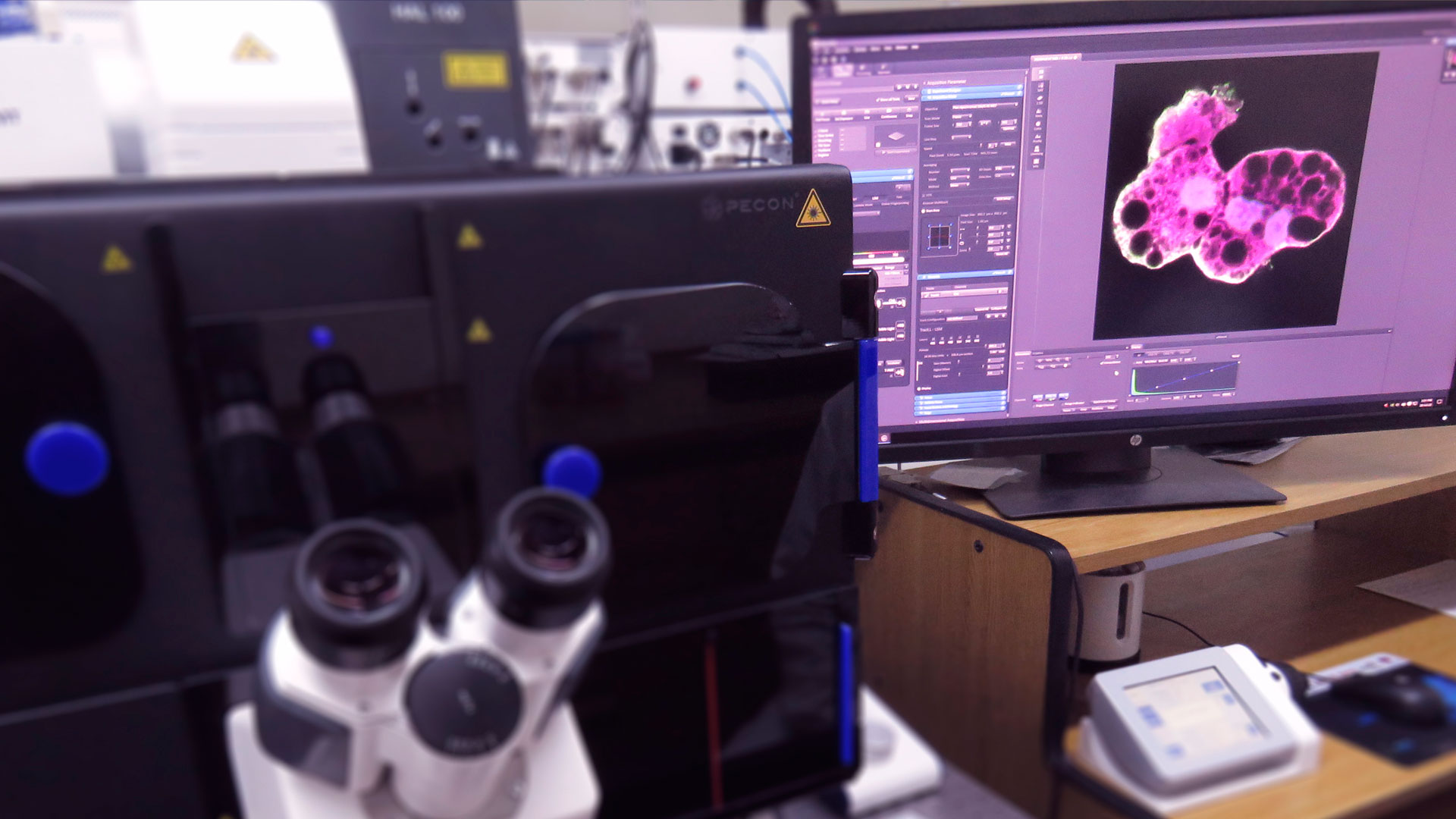
Zeiss LSM 880 Laser Scanning Confocal Microscope
Features:
- Axio inverted microscope Observer 7 motorized.
- Confocal lasers: 405, 458, 488, 514, 543, and 633nm.
- Detection system of 3 photomultipliers in a 34-channel QUASAR arrangement for spectral separation.
- Objectives 10x, 20x (NA 0.8), 40X (NA 1.2 Aqueous), 63X (1.4 Oil) and 100x (1.46 Oil).
- Super-resolution module airyscan.
- Reflection (TIRF) with high-power lasers 405, 488, 561, and 633 nm.
- EMCCD camera for super-resolution Andor iXon 897.
- High-precision piezoelectric platen.
- Universal holder for slides and Petri dishes up to 60mm.
Microscope suitable for quantitative analysis of fixed biological samples or live cell imaging and super-resolution image acquisition.
The confocal module has six lasers and a high-sensitivity detection system with spectral separation that allows the emission of fluorophores to be separated even if their spectra overlap.
The Airyscan detector improves the resolution of the confocal system and can achieve a lateral resolution of 140nm.
It has a Total Internal Reflection (TIRF) illumination system and an EMCCD camera for super-resolution.
It has a cell incubator and an automatic focus drift compensator for long-time recordings. Samples should be mounted on slides or 35 to 60-mm Petri dishes.
Temporary courses, z – stacks can be performed, large areas mosaic, and multiple positions can be programmed, and the acquisition can be automated by combining the different modes. It is also possible to carry out FRAP and FRET experiments.
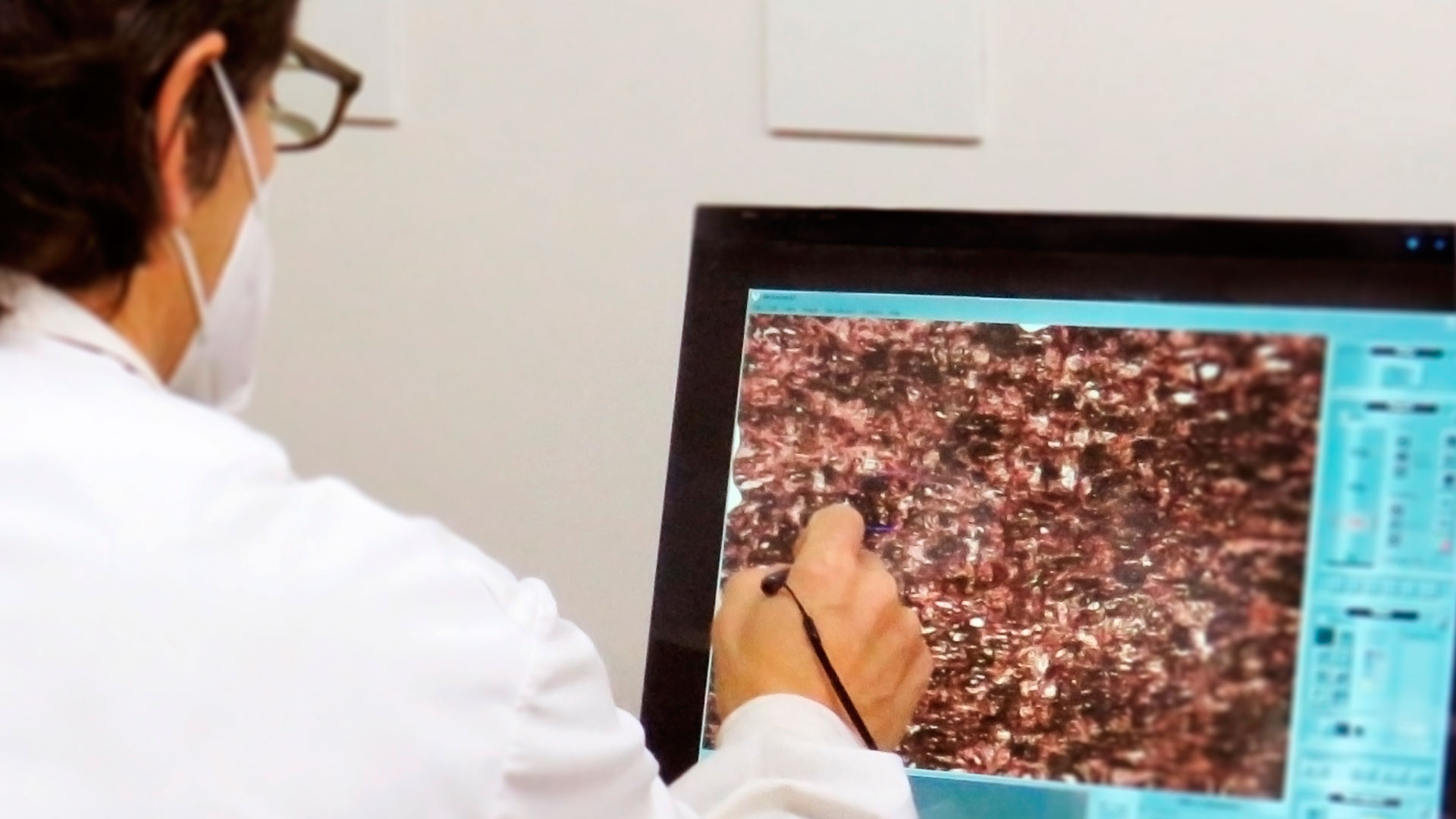
Laser Capture Microdissection System
Features:
- ArcturusXT Laser Capture Microdissection System
- Motorized Nikon Eclipse Ti-E inverted microscope
- Brightfield, phase contrast, and epifluorescence illumination with red, green, blue, and UV filter cubes
- Color CCD camera
- 2X, 10X, 40X and 60X objectives
This technology makes it possible to separate single cells or small groups of cells from a heterogeneous tissue in a selective, efficient and quick fashion, enabling the systematic study of the quality and quantity of biomolecules (DNA, RNA, or proteins) in specific cell populations.
The equipment combines infrared laser-activated capture and ultraviolet laser cutting; such features provide great versatility while facilitating customization to meet the needs of different research lines.
Technological Services:
Gallery
Contact
Lic. Sebastián Petracca
Pablo Pomata, PhD – Area Manager
Address
Vuelta de Obligado 2490
(1428) CABA. Argentina
Telephone number
+54 11 4783-2869
